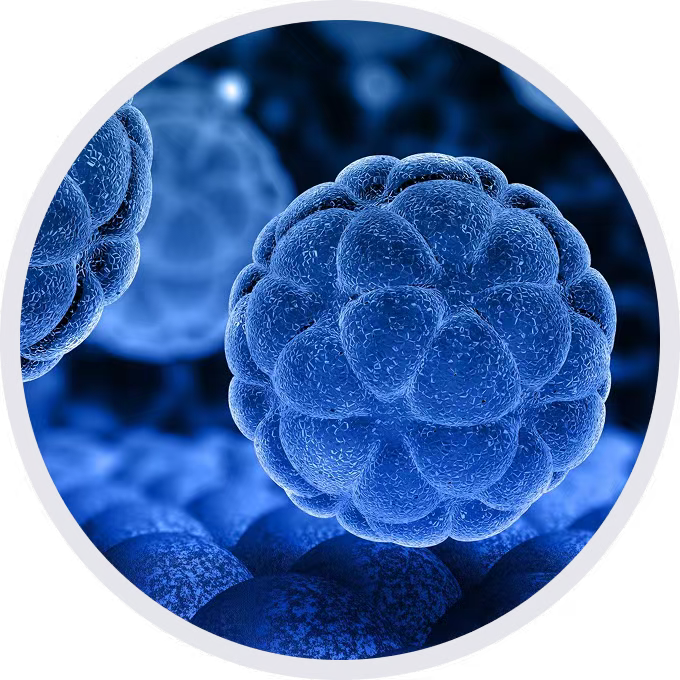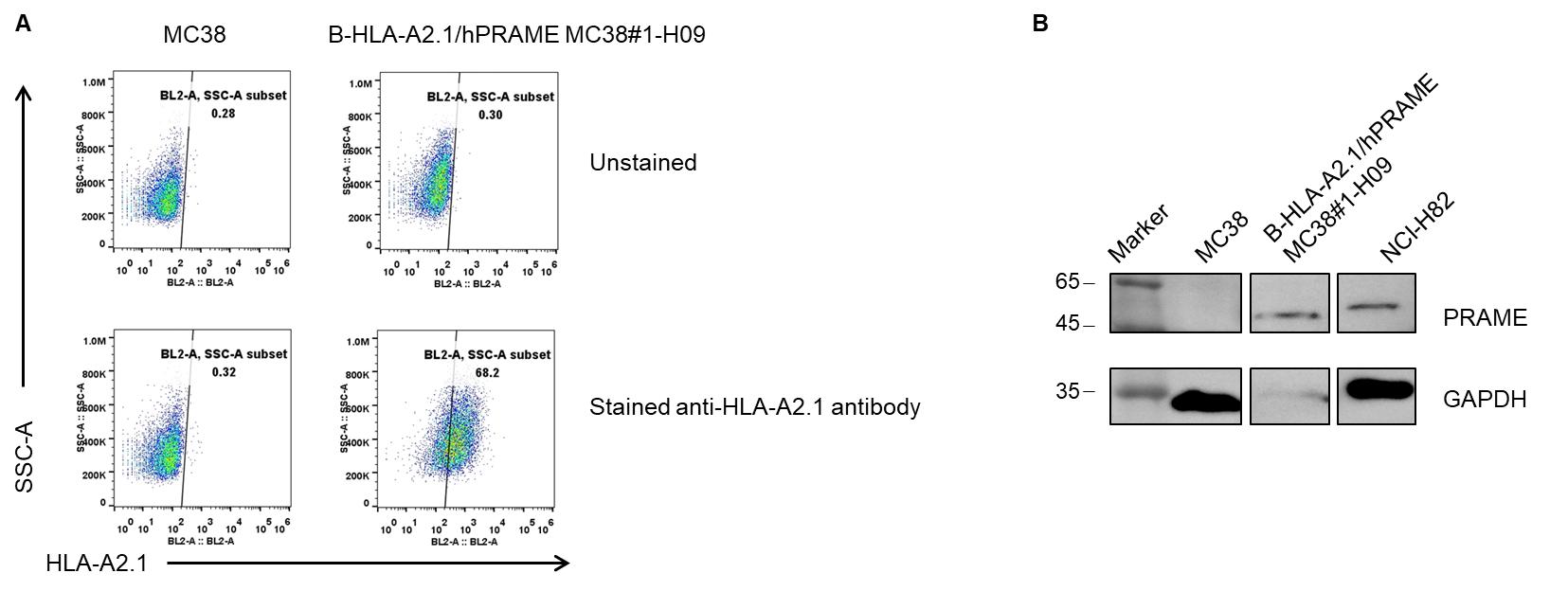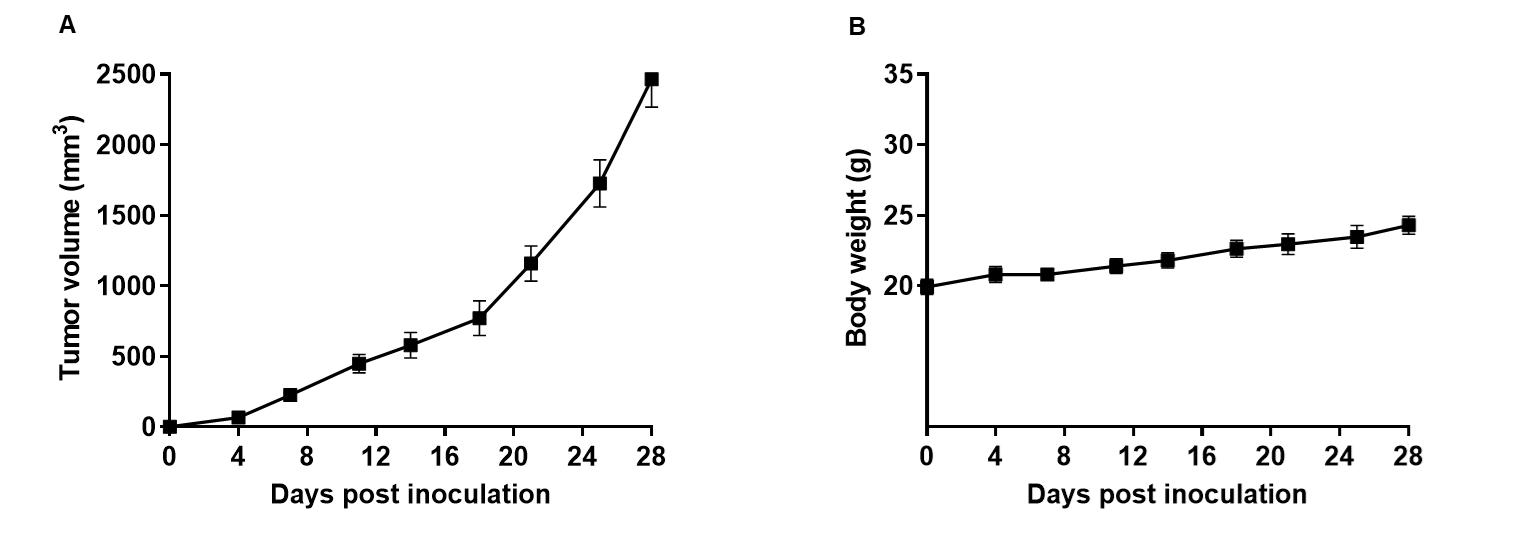
• 322453

| Product name | B-HLA-A2.1/hPRAME MC38 |
|---|---|
| Catalog number | 322453 |
| Strain background | C57BL/6 |
| NCBI gene ID | 567,3105,1489078,1489078 (Human) |
| Chromosome | 2 |
| Aliases | IMD43, AMYLD6, MHC1D4; HLAA; PRAME |
| Tissue | Colon |
| Disease | Colon carcinoma |

HLA-A2.1 and human PRAME expression analysis in B-HLA-A2.1/hPRAME MC38 by flow cytometry and western blot, respectively. Single cell suspensions from wild-type MC38 and B-HLA-A2.1/hPRAME MC38 cultures were stained with species-specific anti-HLA-A2.1 antibody (Biolegend, 343306) and anti-human PRAME(Cell Signaling Technology, 56426S). Human HLA-A2.1 was detected on the surface of B-HLA-A2.1/hPRAME MC38 cells but not wild-type MC38 cells(A). Human PRAME was highly expressed in the tumor cells(B). The 1-H09 clone of B-HLA-A2.1/hPRAME MC38 cells was used for in vivo experiments.

Human HLA-A2.1 and human PRAME expression evaluated in B-HLA-A2.1/hPRAME MC38 tumor cells by flow cytometry and western blot, respectively. B-HLA-A2.1/hPRAME MC38 cells were subcutaneously transplanted into B-HLA-A2.1 mice (female, 7-week-old, n=6), and on 28 days post inoculation, tumor cells were harvested and assessed for human HLA-A2.1 expression(Biolegend, 343306) by flow cytometry and PRAME expression(Cell Signaling Technology, 56426S) by western blot, respectively. As shown, human HLA-A2.1 was highly expressed on the surface of tumor cells(A). Human PRAME was highly expressed in the tumor cells(B). Therefore, B-HLA-A2.1/hPRAME MC38 cells can be used for in vivo efficacy studies of novel PRAME therapeutics.

Subcutaneous homograft tumor growth of B-HLA-A2.1/hPRAME MC38 cells. B-HLA-A2.1/hPRAME MC38 cells (1x106) were subcutaneously implanted into B-HLA-A2.1 mice (male, 7-week-old, n=6). Tumor volume and body weight were measured three times a week. (A) Average tumor volume ± SEM. (B) Body weight (Mean± SEM). Volume was expressed in mm3 using the formula: V=0.5 X long diameter X short diameter2. As shown in panel AB-HLA-A2.1/hPRAME MC38 cells were able to establish tumors in vivo and can be used for efficacy studies.